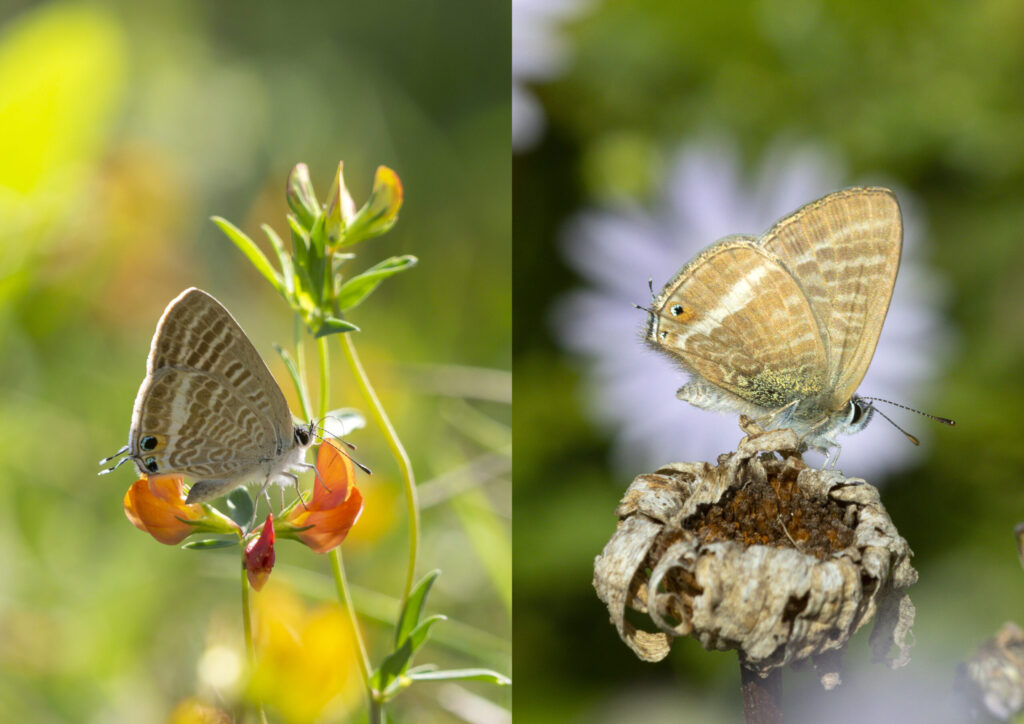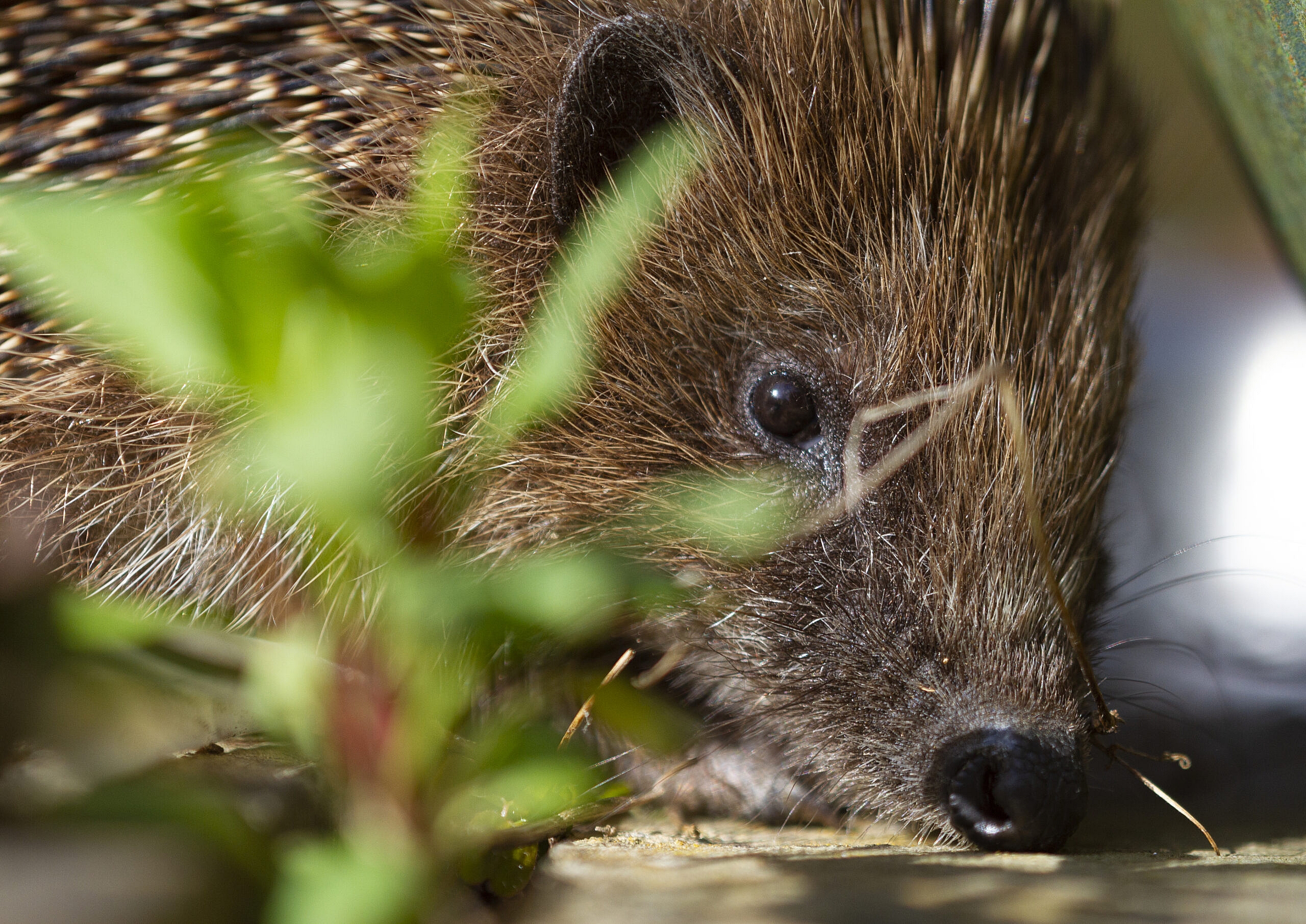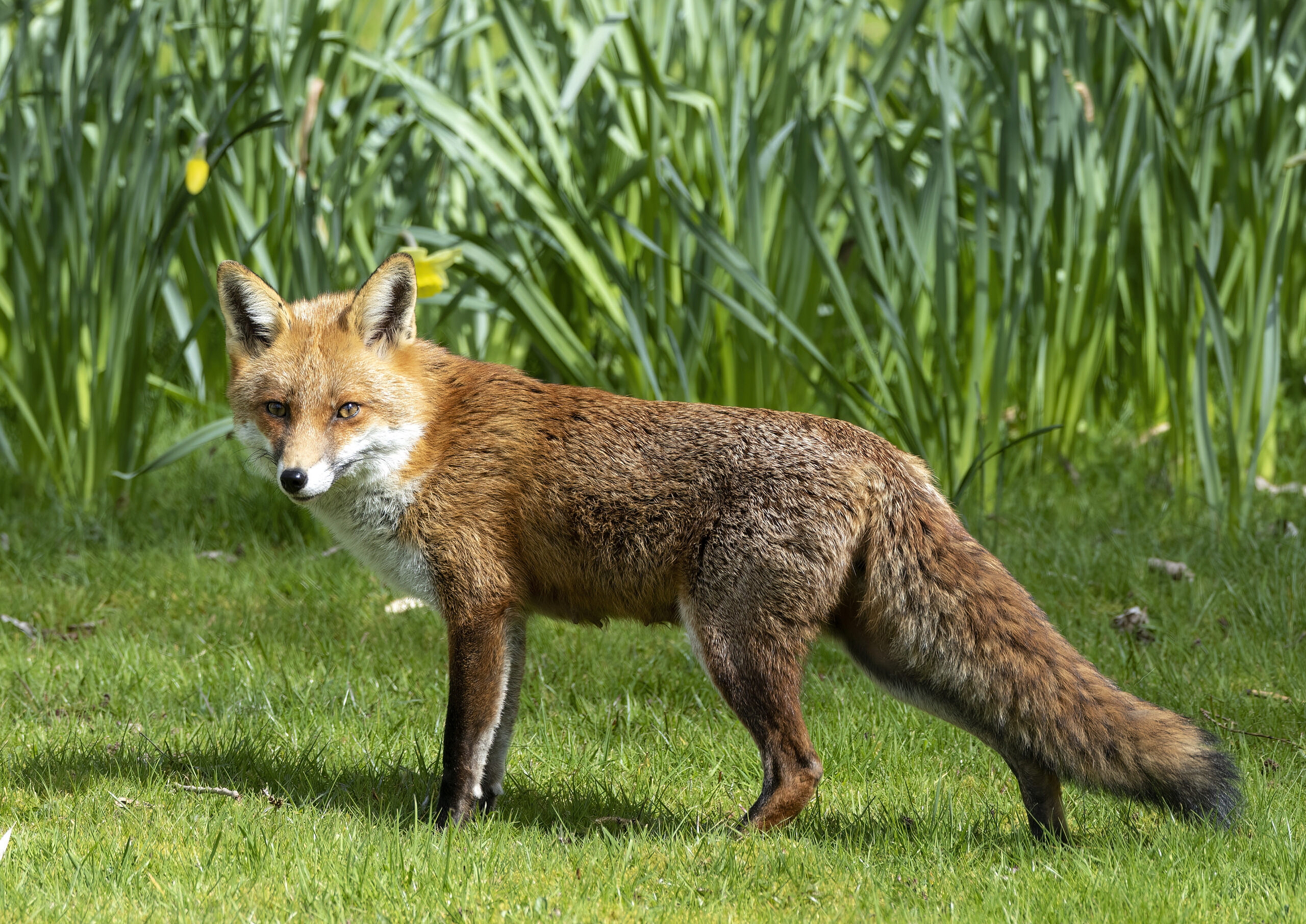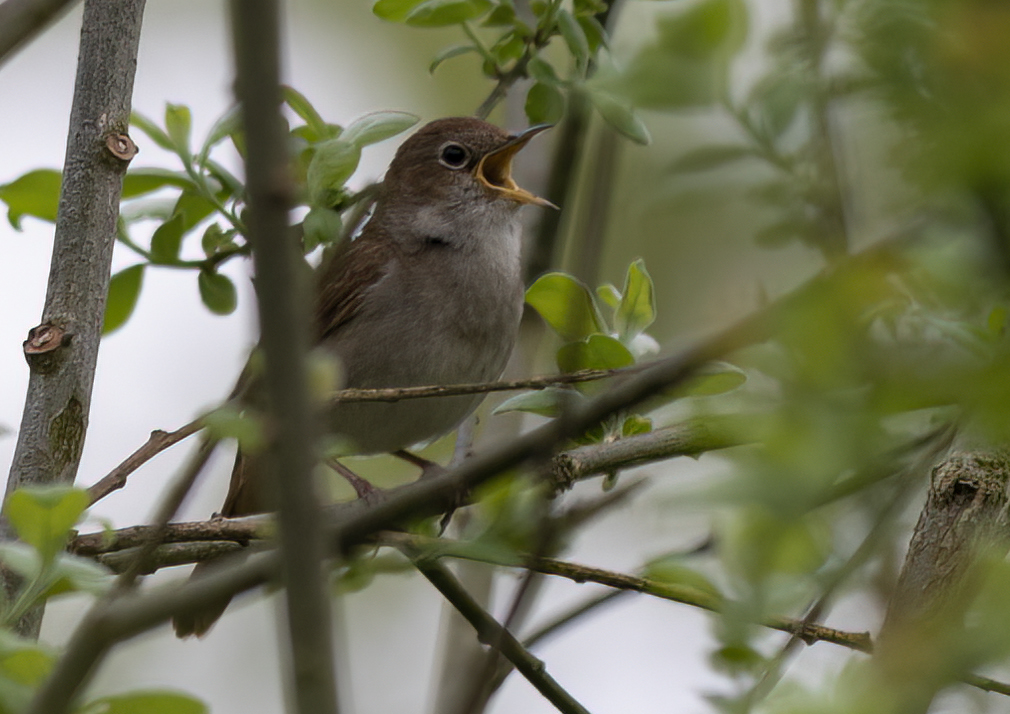I went to Brighton yesterday. Why not? It was a sunny if windy day, one of a run of days of nice summery weather that would have been really appreciated during summer but was rather more annoying now that the schools have gone back. But if you live in the UK, wonky weather is the deal you sign up to.
But surprisingly for a 3-hour drive (lorry fire on the M25) to a seaside town, I wasn’t heading to the beach. I was heading to some hilly ground to the East of the town, to meet an old friend. I could seas the sea quite clearly, and it did look inviting until I reminded myself that this was September in Britain and the sea probably had pack ice floating in it (I may be exaggerating a touch). So why was I here? I had come to try and see an insect, a butterfly, that might just be one of those European migrants trying to set up home in the UK, the difference here being that we don’t have warships trying to stop them. It’s the long-tailed blue butterfly.
I’ve seen the long-tailed blue butterfly before. In the carefreee, covid-free halcyon days of 2018, I jetted off to Minorca on holiday. Being the kind of person I am, it didn’t take many days of lying on a beach before my feet got twitchy and I set off inland with a camera hunting for wildlife. In the back of a town centre development near Cala Galdana, I found a patch of ground that had been bulldozed to make way for some building work that hadn’t happened. On the back of the rubble-strewn site, some everlasting sweet peas had bloomed. And on the sweet peas, I found the long-tailed blue, butterfly sometimes called the “pea blue”. It’s a striking butterfly, with underwings chased in fine repeated fawn and white lines, like a doodle you would make on a boring phone call. The upperwings of the male are a deep, violet blue, but it is name for two short “tails” that project back from each wing, accompanied on the underside by two glittery eye-dots. What are they for? Nobody knows for sure, but it’s possible that they are a defence mechanism, a handy, disposable part of the butterfly’s wing that a pursuing predator can catch while the rest of the butterfly escapes. Or it may just be what counts as really sexy in butterfly world.
I arrived a a spot on the hills where the same everlasting sweet pes grows wild. There were perhaps a dozen plants, most finished for the year and faded, but one of which bore a fresh, neon pink bloom. Surprisingly, this plant seemed to hold no attraction for any butterflies at all, but on a nearby stand of faded blooms, I came face-to-face with my holiday romance. Nearly eight hundred miles and at least three countries away from where I’d last seen one, this was actually no foreign butterfly. Clean and crisp, this butterfly hadn’t flown the Channel: it’s parents had. The long-tailed blue can fly huge distances, crossing mountain ranges, and a hop across the Channel was nothing to it. It’s a born invader as remarkably, it can complete its entire life cycle, going from egg to caterpillar to chrysalis to butterfly in as little as four weeks in good weather. This long-tail was born here, on this Brighton hillside, as British as I am. The test now will be whether any of these new citizens’ eggs will survive our winters to emerge next year. If they do, Britain will have acquired two more “native” species of butterfly in a single year.
So here are two long-tailed blues, in phots taken 800 miles apart. Can you tell the Spaniard from the Brit?





Social Profiles